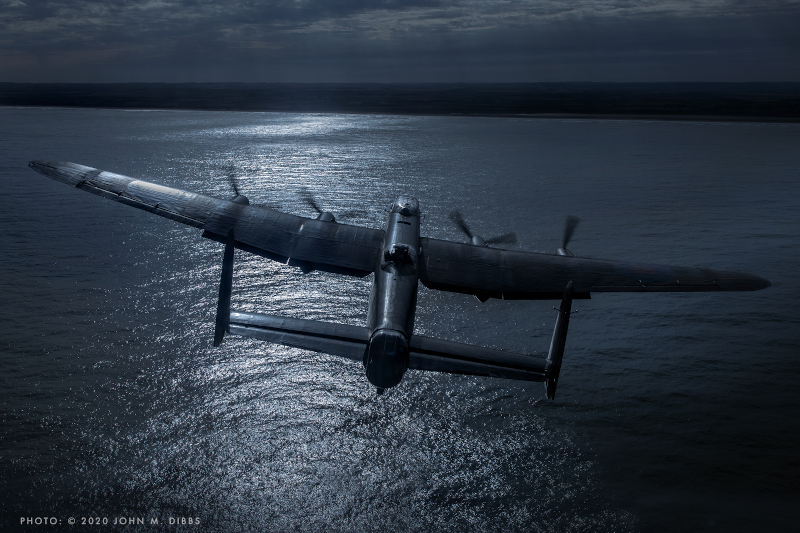Directors – David Fairhead, Anthony Palmer – 2022 – UK – Cert. PG – 110m
****
The story of World War Two’s iconic Lancaster bomber aircraft, the missions it flew and the airmen who served as its crews – out in cinemas on Friday, May 27th
The constant drone-like sound, the view looking downwards moving over water, a Lancaster bomber aircraft flying the length of a lake, the camera above it titling down as it passes to reveal it crossing a dam. This sequence, impressive on a big cinema screen equipped with a really good sound system, opens this informative and compelling documentary.
The Lancaster is entrenched in the British psyche from The Dam Busters (Michael Anderson, 1955) and in due course clips from that film and a few others appear here. I can remember seeing it many times on afternoon television as a child in the late 1960s / early 1970s. Present day footage of this amazing aircraft in flight jostles with comments by present day airmen who fly in it, and their enormous affection and respect for the aircraft comes through loud and clear. They are seen touching a plaque by the plane’s entrance doorway commemorating all those who flew her during World War Two as a way of taking the spirits of those people with them on flights today.
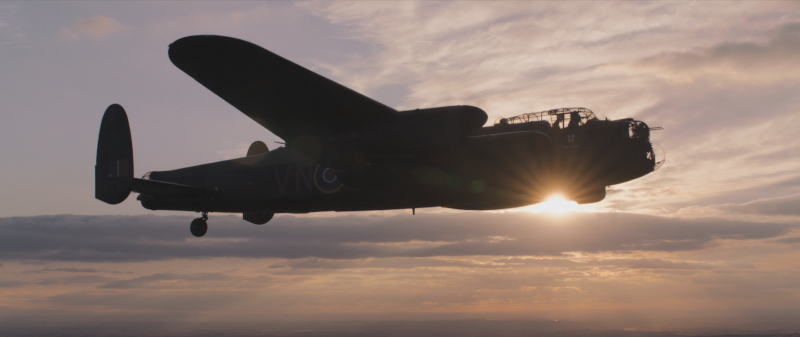
It inevitably made a far greater impression on those who encountered it one way or another during the war. Much interview material has been gathered for this film, mostly of the surviving airmen who crewed the Lancaster as well as the occasional woman, among them one romantically involved with one of the pilots killed in action plus a German civilian woman witness to the bombing of Dresden, in which the aircraft played a major role. Further material details the Blitz and the Battle Of Britain (very briefly as these are not really the film’s subject, the directors already covered much of that ground in Spitfire, 2018) and the subsequent development of the Avro Lancaster bomber and the various uses to which it was put during WW2.
Various British bomber aircraft already existed, but none were to prove satisfactory until A.V.Roe’s chief designer Ray Chadwick reworked the Manchester bomber with four Rolls Royce Merlin engines (the motor that had previously powered both the Hurricane and the Spitfire fighters) and the Lancaster was born. Helpful graphics also detail the layout of the planes in terms of where and how the various crew members were positioned. There doesn’t seem to have been a great deal of room for each person: the purpose of these planes was, after all, primarily as carriers of bombs to be dropped on distant targets and the bigger the potential payload, the more effective the aircraft.
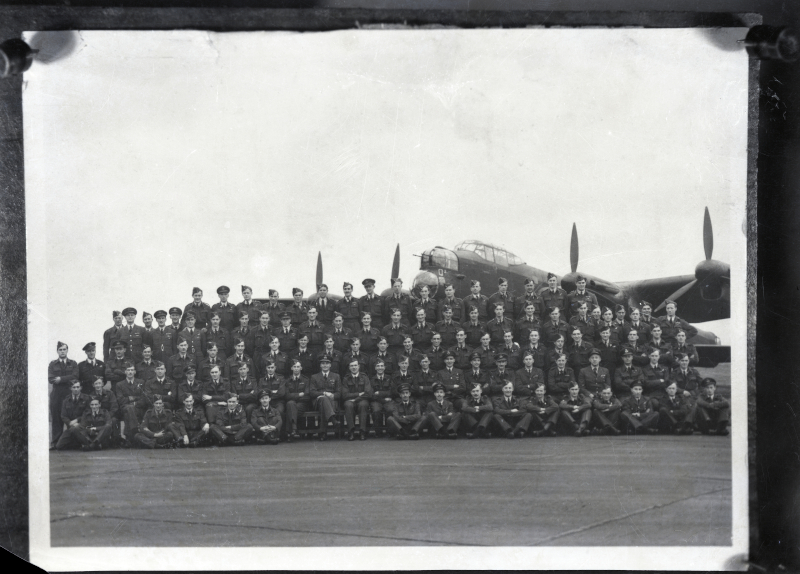
Perhaps surprisingly, the greatest resource on display here is not the superb present day footage of a Lancaster in flight nor the cleaned up archive footage of bombing raids, nor even the list and accompanying detail and analysis of the various missions the aircraft flew – essential though all these are, especially the latter which provides the overall story structure – but rather the interview material with some 38 veterans aged between 95 and 100 which is edited around the preamble and the missions. One grizzled crew member comments that, if you weren’t there, you don’t really know anything about it and don’t really have a right to comment, a sentiment with which I only partly sympathize since, for example, it might preclude anyone of a later generation making a film on the subject such as the current offering.
Another veteran specifically invokes his Christian faith and mentions the tension between that and operating a weapon of war, but then says that that was the time in which these things happened and people did what needed to be done. He seems sincere and, as someone with a Christian faith myself, I wanted to hear more of how he worked this out and has presumably struggled with it in the years since the conflict, but perhaps that would be material for a separate documentary on the morality and ethics (or otherwise) of World War Two. Or perhaps he went into this a lot more on camera, and it’ll turn up on the inevitable Blu-ray.
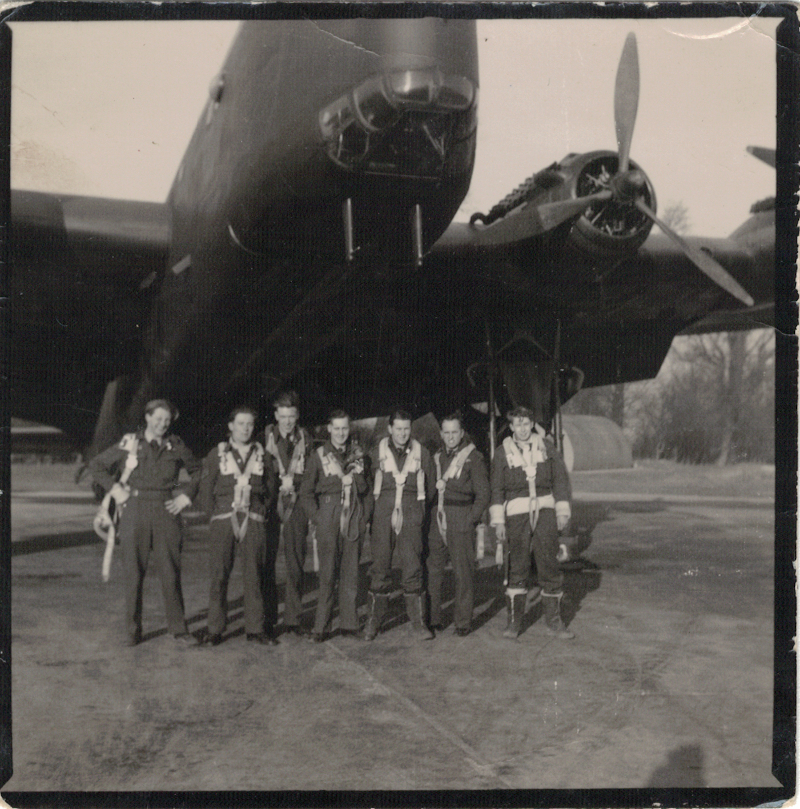
The interviewees talk about their initial formation into crews – much like a dating agency says one – wherein each of the seven crew members picked those who they thought would serve them well and get them back alive. You were looking for a reliable pilot, or gunners who would inflict maximum damage on the enemy preventing them from shooting you down, or a bomb sighter who would efficiently instruct the bombing of targets so that you didn’t have to go back for a second run. Every crew thought they were the best in the squadron.
The irony of all this is, of course, that you can only interview the living, unless there exist recordings or transcripts of men in aircraft going to their deaths (as for instance, and he’s not a bomber pilot and not mentioned here, the fictionalised airman whose plane is going down as he talks to a woman radio operator at the start of A Matter Of Life And Death, Michael Powell and Emeric Pressburger, 1946). One wonders what stories the dead would tell and how different they would be from those told by those who lived. One tantalising interview fragment tells of an airman who survived being shot down only to walk into the building from which the Germans were operating searchlights to light up the bombers; he spent the rest of the conflict as a POW.
Not that the film exactly shies away from death among the Lancaster crews. A woman describes failing to ring her airman prior to what was to be his last flight out, while crew members talk about coming home and seeing empty seats in the canteen where crews had sat only the day before, most notably after the disastrous first Berlin bombing run where an unfortunate combination of clear weather en route and cloudy weather at the drop zone caused heavy Lancaster casualties.
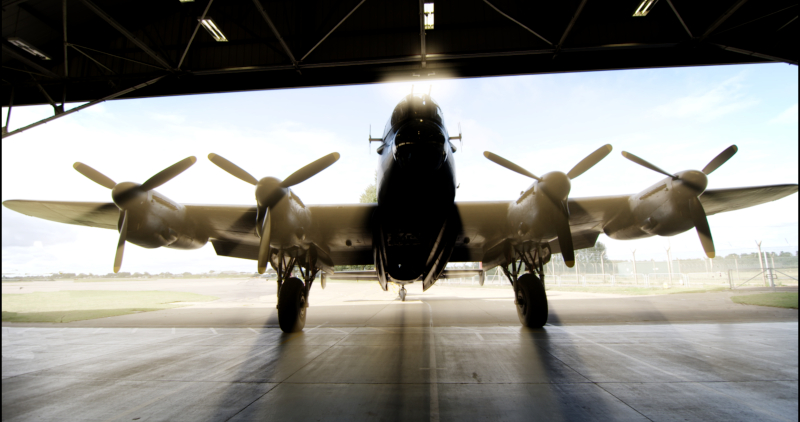
As the film works its way through various wartime operations on which the Lancaster was deployed, it moves from saturation bombing “where the targets were the cities themselves” through to strategic bombing where specific sites of production or infrastructure such as factories or railway tunnels were targeted. This traverses operations as diverse as the Ruhr Valley dams, Normandy and the city of Dresden.
In the Ruhr Valley, dams were targeted by means of bomb designer Barnes Wallis’ barrel bombs which, once dropped, bounced along the water surface to reach their target, an operation forever immortalised in The Dam Busters. The Lancasters were sued to bomb targets in Normandy, only discovering this was for D-day upon seeing the English channel covered with landing craft as they flew home.
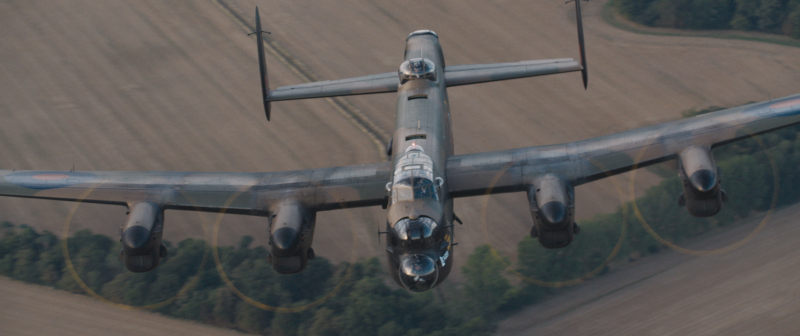
The later bombing of Dresden resulted in an horrific inferno which reduced the city to ruins and is widely viewed as one of the atrocities of the War. While the documentary doesn’t say much about the effects of bombing, focusing more on its being carried out, there is considerable footage both of Dresden and other German cities after they’ve been bombed to ruins. Plus, there’s a small amount interview footage with a woman who viewed the bombing of Dresden from nearby as well as a rear gunner commenting on seeing the firestorm as they were leaving.
The documentary reaches our cinemas at a time when the Russians have attacked / are attacking Ukraine and have flattened such cities as Mariupol (albeit with ground forces and missiles rather than aircraft bombers). How that will affect the desire for audiences to view a documentary about an iconic bomber aircraft from an earlier time remains to be seen. Lancaster briefly tackles the ethics of war to a limited degree, but focuses more on the men who crewed these planes with some remarkable interview footage. Packaged into a framework which outlines the aircraft’s development and use during the war, that delivers a documentary well worth seeing.
Lancaster is out in cinemas in the UK on Friday, May 27th.
Trailer:
